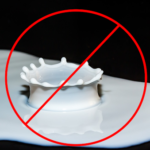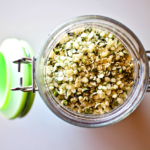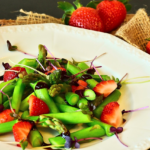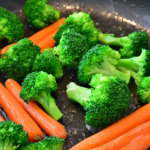
#eating4health
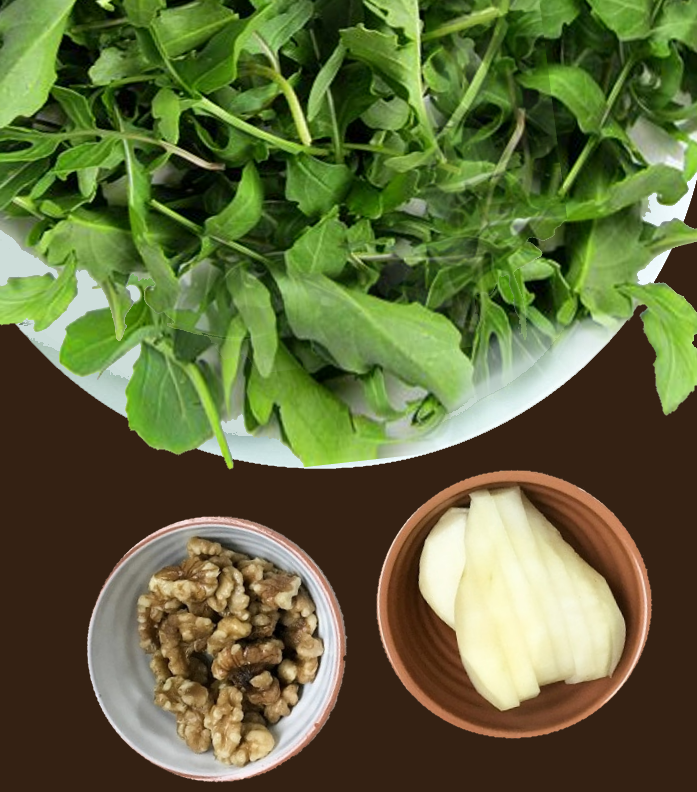
Arugula, Pear and Walnut Vinaigrette Salad
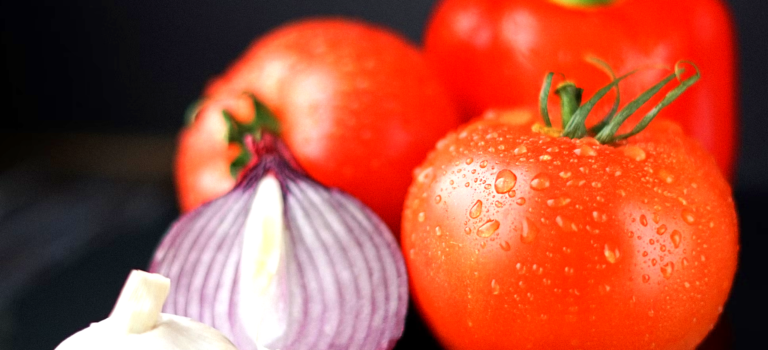
Prebiotics and Probiotics

Do you need to take prebiotics with probiotics? Is it necessary to take both?
Prebiotics are nutrients that nourish probiotic bacteria. When we eat them, the bacteria get “fed” too. Probiotic bacteria are micro-organisms that support human health.
You don’t need to get prebiotics in the form of supplements. It’s better to get what you need from your diet. Here are some good sources:
- Radishes
- Carrots
- Flax and Chia Seeds
- Tomatoes
- Garlic
- Chicory Root
- Dandelion Greens
- Jerusalem Artichoke
- Jicama
- Yams
Mix ground flax seeds into your oatmeal. Add chia seeds to your morning smoothie or make chia pudding. Have some spaghetti topped with a garlicky tomato sauce. It’s easy to get prebiotics from your diet.
You can get the probiotics from foods too, such as cheese, yogurt, sauerkraut and pickles. Probiotic capsules are helpful if you’ve been given antibiotics or have had an intestinal infection, but for your everyday requirements, get what you need from food.
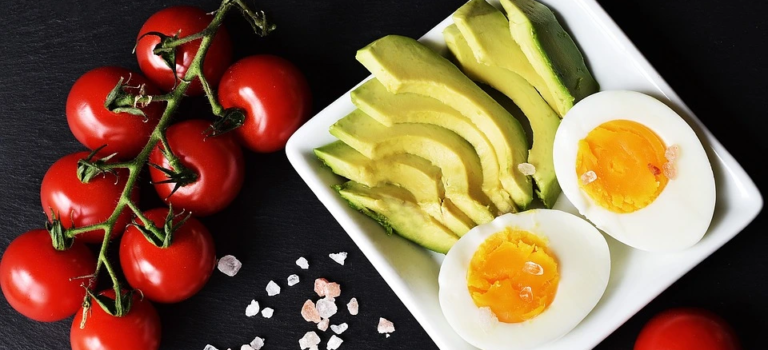
Keto Diet vs High Protein

What is the difference between the keto diet and a high protein diet?
This is a good question because many people use these terms interchangeably.
Both diets restrict carbohydrates.
A high protein diet is one in which most of the calories come from protein. Since carbohydrates cause the body to retain water, high protein diets cause rapid water loss in the early stages, and are popular for weight management because of this effect. The popularity of high protein diets is a concern because too much protein can be toxic to the liver and kidneys.
“Keto” is short for ketogenic. A ketogenic diet is one in which most of the calories are sourced from fat, or fat and protein. Ketogenic diets were originally developed as a treatment for children with epilepsy. They continue to be used for this purpose and to treat other neurological conditions.
A ketogenic diet, followed rigorously, will induce a metabolic state known as ketosis. Ketosis is a process that switches your body from relying on carbohydrates for fuel to relying on fat. Because ketogenic diets promote fat burning, they have become popular for weight management.
What some people misunderstand about ketosis and high protein diets is that your liver has the ability to convert certain amino acids into carbohydrates. This conversion can take people out of ketosis if the protein intake is too high, and therefore diminish the fat burning aspect of the diet.
Because ketogenic and high protein diets can have significant metabolic impacts, you should check with your doctor prior to making any big changes to how you eat.
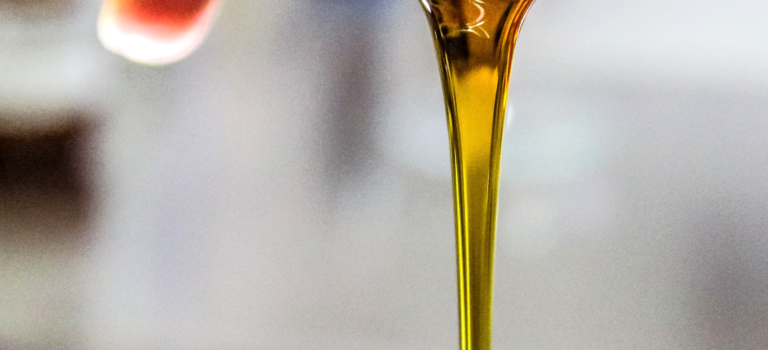
HFCS: The Most Unhealthy Food Additive

Know What’s In Your Food
There are lots of candidates for worst food additive: trans fat, high fructose corn syrup (HFCS), artificial sweeteners, artificial colours, sodium-based preservatives and some flavour enhancers. I think all of these things are “evil” but consider HFCS to be the worst.
Gluten and lactose are not evil but obviously have to be avoided by those with intolerances. Natural salts are okay in moderation. Sugar is okay in moderation. Fats and oils, aside from trans fat, are okay in moderation. Even fructose is okay – in moderation.
When you look at an ear of corn, it seems so wholesome and innocent. It’s hard to imagine it as the source of a food additive that contributes significantly to the development of obesity, type 2 diabetes and other metabolic disorders, and yet, it does. What makes HFCS the worst, in my opinion, is that it is insidious. It shows up in savory foods and beverages as well as those that are sweet.
Fructose – “fruit sugar” – contributes to the development of metabolic diseases through its impact on the liver. People who consume excessive amounts of fructose develop fatty livers, a condition called non-alcohol fatty liver disease (NAFLD).
If untreated, NAFLD can progress to nonalcoholic steatohepatitis (NASH), characterized by inflammation and mild fibrosis in addition to fat infiltration and, eventually, advanced scar tissue deposition, cirrhosis, and finally liver cancer, which constitutes the culmination of the disease. Notably, fructose is recognized as a major mediator of NAFLD, as a significant correlation between fructose intake and the degree of inflammation and fibrosis has been found in preclinical and clinical studies. Moreover, fructose is a risk factor for liver cancer development. Interestingly, fructose induces a number of proinflammatory, fibrogenic, and oncogenic signaling pathways that explain its deleterious effects in the body, especially in the liver. [1]
If you are not yet alarmed, here’s more food for thought:
Fructose metabolism in key metabolic tissues including the small intestine, liver, and kidney may contribute to diverse cardiometabolic risk factors including steatosis, increased glucose production, hypertriglyceridemia, increased adiposity, and hypertension. [2]
The good news is HFCS is easy to avoid if you limit your intake of highly processed foods and beverages. If your diet is based on a variety of whole foods which you prepare yourself, you’ll be able to bypass lots of food additives, including high fructose corn syrup.
References
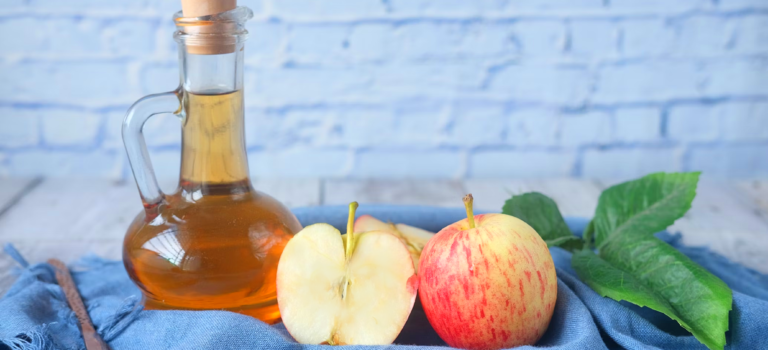
Is ACV A Panacea?

Does Apple Cider Vinegar Cure Everything?
Apple cider vinegar is a home remedy that has developed a high profile, credited with curing everything from helping you to lose weight to treating fatty liver to curing eczema. How many of these claims are supported by science, and are these findings limited to apple cider vinegar?
When you consume vinegar with food, you add acidity to the stomach contents. The acid the stomach produces itself is many times stronger than vinegar, but not everyone produces enough of it. The consequences of low stomach acid (hypoacidity) include poor sterilization of food, incomplete digestion of proteins and reduced absorption of minerals and vitamin B12. A wide variety of conditions can improve when normal stomach digestion is restored with increased consumption of vinegar. Here is a list of some of the claims, not all of which are supported by research:
GERD (gastroesophageal reflux)
Symptoms of GERD can occur no matter how much acid is produced by the stomach. Because the tissues of the esophagus are so delicate, GERD is often treated with acid reducing medications to protect the esophagus, not because your stomach is making too much acid. For people with GERD whose acid production is normal or low, treatment with these medications can create or worsen a pre-existing problem, and contribute to the development of nutrient inadequacies. There is a theory that closure of the valve between esophagus and the stomach, the lower esophageal sphincter or LES, is regulated by the acidity of stomach contents. However, studies have shown that the mechanisms in LES regulation are more complicated than this, so research supporting the acidity theory is lacking.
High Cholesterol
A 2018 study that looked at metabolic response to red date vinegar found it significantly reduced blood cholesterol but did not have a significant impact on blood sugar regulation or liver enzymes in people with type 2 diabetes.[1]
High Blood Pressure
Although there have been many animal studies, especially those with rats, showing vinegar’s antihypertensive effects, research on human response does not yet support this finding.[2]
High Blood Sugar and Weight Loss
Findings with respect to blood sugar control and weight loss have been mixed. Some studies have found no effect [3], while others have found clinically significant effects [4]. Consuming vinegar might be helpful for some people but it should not be solely relied upon for weight management or treatment of any kind of diabetes until larger controlled studies demonstrate.
Resistance to Infections and Modulation of Immune Function
Use of the vinegar to treat infection dates back to Hippocrates in 400 BC. Various studies have demonstrated the ability of vinegar to inhibit the growth of many types of infectious organisms, and some studies show it can be an effective treatment for mild infections, including ear infections. [5] There is some limited evidence that vinegars could modulate immune response in allergies by altering the proteins that trigger the hypersensitivity. [6]
As popular as apple cider vinegar is for its palatability, all kinds of vinegars have health-promoting properties. Vinegar’s use as a home remedy does have some scientific support, but, as the case with many things, the support is equivocal and is strongest in respect to lowering cholesterol and blood sugar. While vinegar consumed as a food with meals can contribute to better health, caution should be used with supplemental vinegar, as it can be a causative factor in corrosive injury [7] and osteoporosis [8].
References
[2] Functional Properties of Vinegar, 2014
[4] Potential Uses of Vinegar as a Medicine and Related in vivo Mechanisms, 2017
[5] Vinegar Functions on Health: Constituents, Sources, and Formation Mechanisms, 2016
[6] EFFECT OF VINEGAR TREATMENT ON ALLERGENICITY OF Macrobrachium rosenbergii, 2018
[7] Vinegar: Medicinal Uses and Antiglycemic Effect, 2006; Acute Oral Acetic Acid Intoxication: A Case Report, 2009
[8] Hypokalemia, Hyperreninemia and Osteoporosis in a Patient Ingesting Large Amounts of Cider Vinegar, 1998
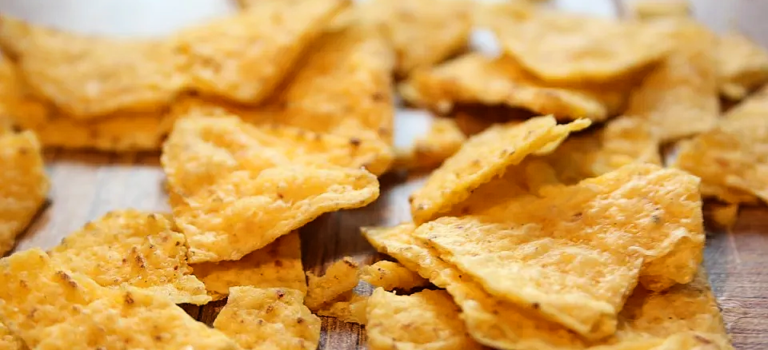
Is Junk Food Healthy in Moderation?

Is junk food in moderation healthy for you?
I assume “junk food” refers to foods that are high in fat, sugar and/or salt, which are also not nutrient dense. Doritos corn chips could be an example.
A 1 ounce serving of Doritos is about 11 chips. How many people do you know who would count out 11 chips and stop eating them after that, especially if consuming them from the snack sized bag pictured here?

For 320 calories, you get 16 grams of fat. Fat provides 9 calories per gram, so this means 45% of the calories in the bag are from fat, providing about one quarter of your daily fat intake (assuming a caloric intake of 2000 calories) in 22 chips.
The term “moderation” is a bit vague. I happen to like Doritos. I might eat them twice a year. For me, this is moderation. Someone else might think moderation means twice per week.
Finally, think about this: if you were to beat your head against a brick wall 10 times instead of 20, you would say it was less painful, not more enjoyable. In the same way, moderate consumption makes eating junk food less harmful, not healthy.
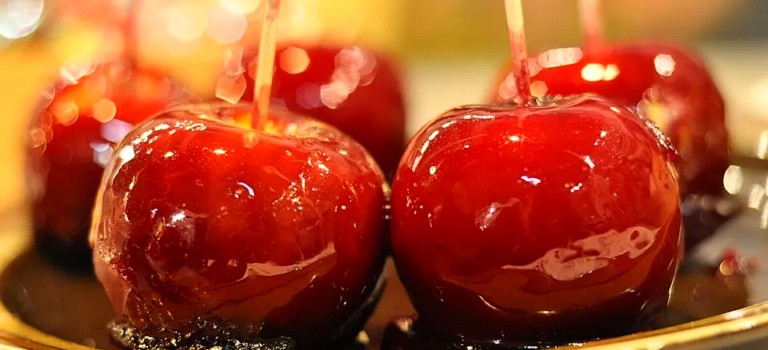
Fruit Overdose

Can you really have too much of a good thing?
How much fruit is too much? For example, is it unhealthy to eat 4-5 pieces of fruit a day all at the same time, as an afternoon snack?
The accurate, but unsatisfying, answer to this question is “It depends”.
It depends on the kinds of fruit you choose, and whether you eat them alone or in conjunction with other foods.
Fruits contain sugars (fructose and sucrose), which can cause spikes in blood sugar (glucose). Most fruits also contain fibre. The presence of fibre slows the digestion of the sugars. Eating fruits with other foods can blunt the impact of the sugars from the fruit on your blood sugar.
It depends on your health, and whether or not you have conditions that might make it advisable to avoid certain kinds of fibre and/or abrupt changes in your blood sugar.
If you have a problem with your weight or your blood sugar, limit your consumption to 2 fruits per day. When you do eat fruit, choose those that have a lower impact (“glycemic load”), such as strawberries, plums, apricots and grapefruit. You can learn more about glycemic load here:
If you have conditions that affect the digestive system, you might need to avoid certain kinds of fibre and/or abrupt changes in your fibre intake. Choose carefully with your doctor’s guidance to avoid symptom flares.
In conclusion, eating 5 pieces at one time might not be a problem if you are healthy. In general, however, it still makes sense to think of fruit as “nature’s candy” and to consume it in moderation.
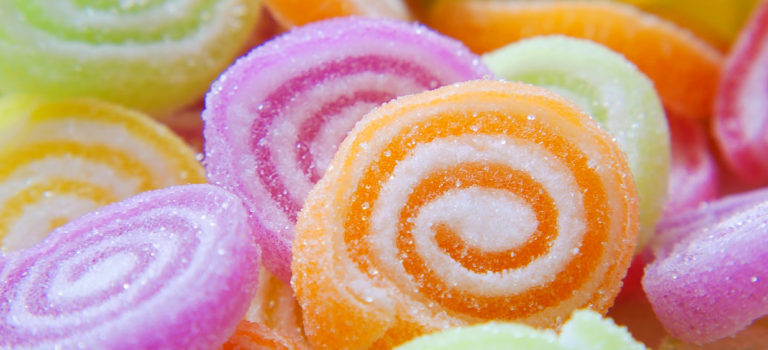
Sugar Cravings: The Real Skinny

Think sugar cravings are a problem? Artificial sweeteners make cravings worse.
Concern among the general public and scientific communities about obesity has resulted in the development of all kinds of diet aids: low fat this, low carb that. On the low carb side of things, we’ve seen a proliferation of sugarless sweeteners being touted as the way to satisfy your sweet tooth without packing on the pounds.
I’ve stated previously that artificial sweeteners are problematic, and can actual contribute to weight gain.
A recently published study sheds some light on why we crave sweets and may help us to understand how we can satisfy those sugar cravings and maintain a healthy weight.
The study looked at the glucose metabolism of the brains of rats who had been kept in a fasting state. It involves an enzyme, glucokinase. When the rats were offered pure glucose or foods high in glucose along with a regular diet, they preferred the higher glucose sources. The longer the rats fasted, the higher their levels of glucokinase, and the more they preferred high glucose foods. The converse was also found to be true: lower levels of glucokinase activity led to lower glucose and overall food consumption.
The study also looked at whether or not a sweet substitute, fructose, would satisfy the fasted rats in the way high glucose foods did and found that it did not. This suggests the regulation of sugar intake by glucokinase is specific for glucose.
Some of the study’s findings are believed to hold true for humans. Studies have shown people with mutations that lower levels of glucokinase have lower body weights; those with mutations that raise levels of glucokinase have higher body weights.
The authors’ conclude:
This mechanism may explain the observation that diets high in carbohydrate are associated with weight gain in mice (62) and why low glycemic index diets produce weight loss (41). It also provides a possible CNS mechanism to explain the often-described phenomena of the “sweet tooth” and carbohydrate craving, particularly for high glycemic index foods.
Key Points
- The best way to manage blood sugar and weight is with a low glycemic diet and an appropriate caloric intake.
- Fasting or extreme calorie restriction will increase sugar cravings in susceptible individuals.
- Trying to fool your brain with artificial sweeteners won’t work.
References
Sucralose Affects Glycemic and Hormonal Responses to an Oral Glucose Load
Glucokinase activity in the arcuate nucleus regulates glucose intake.
Familial hyperglycemia due to mutations in glucokinase.
The second activating glucokinase mutation (A456V): implications for glucose homeostasis diabetes therapy.
